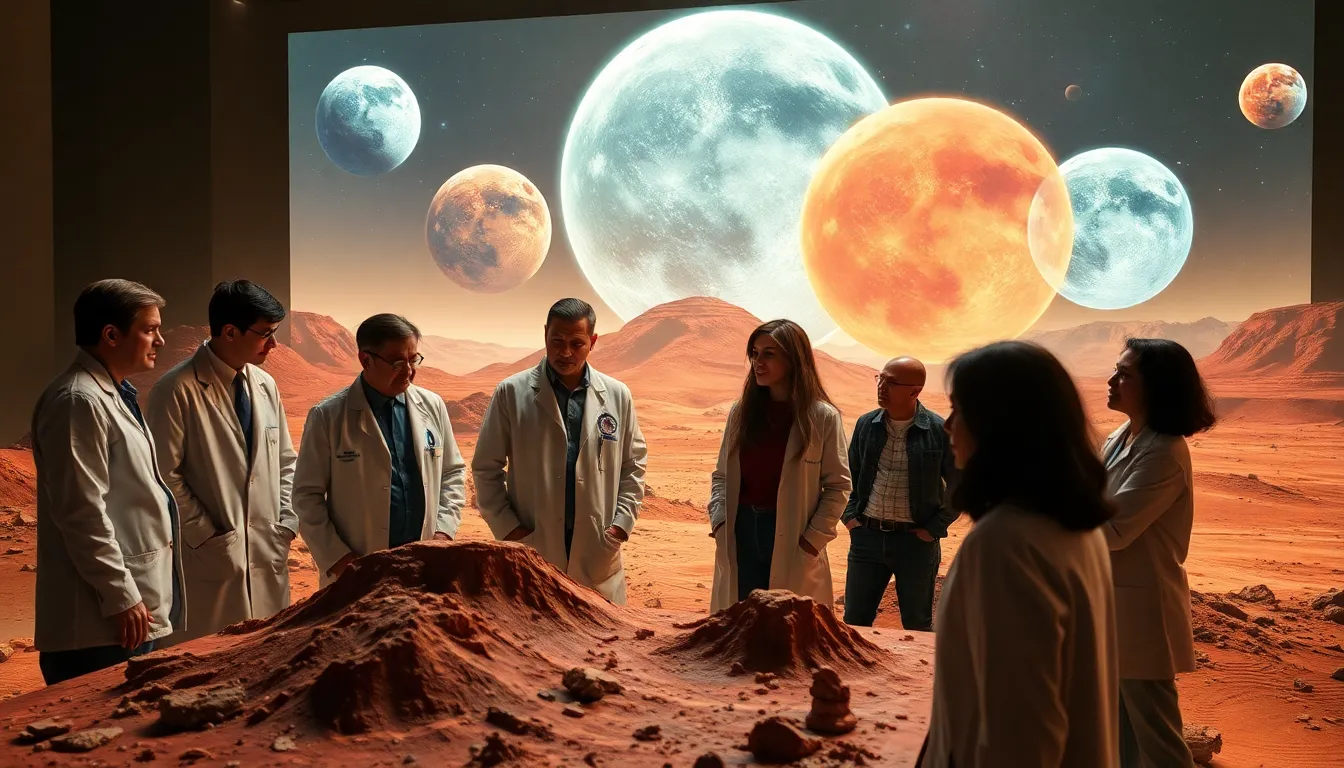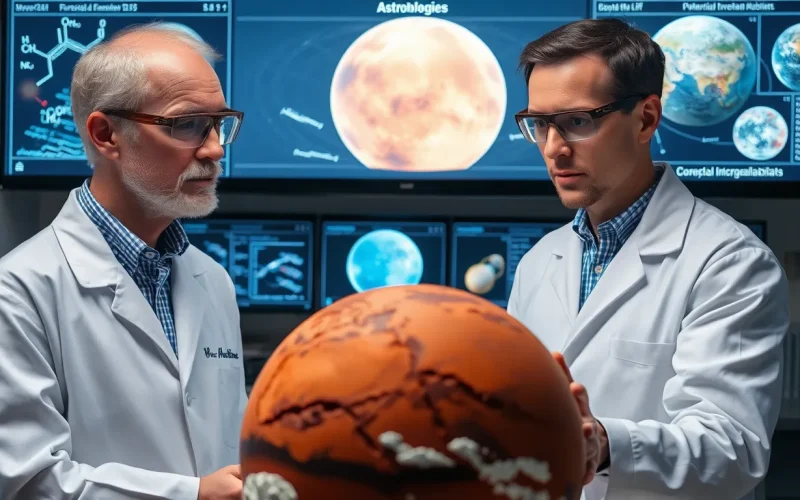Table of Contents
ToggleImagine peering into the vast cosmos and pondering one burning question: are we alone? Astrobiology dives into this cosmic mystery, blending science with a sprinkle of imagination. It explores the potential for life beyond Earth, from the icy moons of Jupiter to the dusty plains of Mars.
What Is Astrobiology?
Astrobiology explores the potential for life beyond Earth. It examines both the origins of life on our planet and the environments capable of supporting life elsewhere in the universe.
Definition and Scope
Astrobiology combines biology, chemistry, and geology to study life in extreme conditions. This field investigates the potential for microbial or complex life forms on bodies like Mars, Europa, and Enceladus. Researchers analyze the chemical building blocks essential for life, focusing on carbon-based compounds and water. Missions like the Mars rovers and spacecraft exploring ocean worlds further expand astrobiological knowledge. Understanding how life adapts to harsh environments informs scientists about its potential existence elsewhere in the cosmos.
Interdisciplinary Nature
Astrobiology incorporates various scientific disciplines, fostering collaboration among researchers. Astronomy provides insights into celestial environments, while planetary science examines planetary bodies and their geology. Molecular biology helps scientists understand the biochemical processes essential for life. Each discipline contributes unique perspectives that enhance the understanding of life’s adaptability. By integrating knowledge from diverse fields, astrobiology uncovers the complex relationships among life, its environment, and the universe. Collaborative efforts drive future research and enhance the search for extraterrestrial life.
History of Astrobiology

Astrobiology’s history reflects humanity’s fascination with life beyond Earth. This field encompasses early ideas and significant achievements that shaped our understanding of life’s possibilities in the universe.
Early Theories and Concepts
Early theories about extraterrestrial life emerged from philosophical inquiries and scientific observations. Ancient Greek philosophers, such as Democritus and Epicurus, speculated about other worlds harboring life. In the 17th century, Johannes Kepler contemplated moons and planets as potential habitats. The 19th century introduced concepts of cosmic evolution, with scientists like Ernst Haeckel proposing that life could exist in diverse forms throughout the cosmos. Additionally, the discovery of extremophiles in the late 20th century further fueled theories about life in extreme environments. These early reflections laid the foundation for modern astrobiology, connecting philosophy to empirical research.
Key Milestones in Research
Significant milestones in astrobiology shaped our exploration of life beyond Earth. In 1965, NASA’s Mariner 4 transmitted the first images of Mars, igniting interest in the planet’s potential to host life. The 1976 Viking missions provided valuable data about Martian soil, although results remained inconclusive. Advancements in telescopes, like Hubble, enabled the study of exoplanets in the 1990s, revealing diverse worlds. The discovery of extremophiles, organisms thriving in harsh conditions, demonstrated life’s resilience. In 2015, scientists detected organic molecules on Mars, supporting the notion that the planet might have harbored life. Each of these milestones advanced astrobiological knowledge, enhancing understanding of life’s potential beyond Earth.
The Search for Life Beyond Earth
Astrobiology emphasizes the search for life beyond Earth, focusing on methods and locations that present promising potential. Researchers employ various techniques to explore celestial bodies.
Methods of Exploration
Space missions utilize rovers, orbiters, and landers to gather data. Rovers like NASA’s Perseverance navigate Martian landscapes, while orbiters analyze atmospheric composition. Spectroscopy helps identify chemical signatures that indicate habitability. Additionally, remote sensing techniques allow scientists to study distant worlds from afar. Collaborations among international space agencies enhance the capabilities of these exploration efforts. Each method contributes unique insights into the conditions that may support life beyond Earth.
Promising Locations in Our Solar System
Several celestial bodies in the solar system attract significant interest. Mars holds evidence of past liquid water and potentially habitable environments. Europa, one of Jupiter’s moons, features a subsurface ocean beneath its icy crust, which may harbor life. Enceladus, Saturn’s moon, also exhibits geysers ejecting plumes rich in organic compounds. Titan, with its thick atmosphere and methane lakes, presents a distinct environment where life could exist. Focusing research efforts on these locations enhances the understanding of extraterrestrial possibilities.
Potential Life Forms
Astrobiology explores various possibilities for life forms beyond Earth. Understanding these entities can significantly enhance the search for extraterrestrial life.
Extremophiles on Earth
Extremophiles exemplify life’s resilience, thriving in harsh conditions like extreme temperatures, acidity, or pressure. Researchers study organisms such as Tardigrades, which endure space and extreme environments. Deep-sea hydrothermal vents host unique species reliant on chemosynthesis, showcasing life’s adaptability. These discoveries indicate that life could exist in similarly extreme environments on other planets or moons. Antarctica’s subglacial lakes also reveal microbial life in ice-covered regions. Observations of extremophiles emphasize the potential for life to exist in extraterrestrial settings previously thought uninhabitable.
Theoretical Life Forms in Space
Theoretical life forms encourage creativity in imagining extraterrestrial possibilities. Some scientists propose silicon-based organisms, offering an alternative to carbon-based life. Others suggest methane-based life could thrive in places like Titan, Saturn’s largest moon. Hypothetical forms may find energy through unique biochemical processes not seen on Earth. Researchers explore the implications of life existing in alternate DNA structures or entirely different biochemistries. Such considerations broaden the scope for potential life in diverse cosmic environments, furthering the exploration of life’s adaptability across the universe.
The Role of Technology in Astrobiology
Technology plays a crucial role in advancing astrobiology. It enhances the detection and understanding of extraterrestrial life forms and their environments.
Space Missions and Telescopes
Space missions gather invaluable data from celestial bodies. NASA’s Perseverance rover explores Mars, analyzing soil and searching for signs of ancient life. Additionally, the James Webb Space Telescope observes distant exoplanets, analyzing their atmospheres for habitability indicators. Missions like ESA’s Rosetta have studied comets, revealing organic molecules that could be essential for life. These technologies, equipped with advanced sensors and instruments, provide insights into conditions that support life across the universe. Each mission contributes to a growing archive of knowledge, enabling scientists to refine models of potential habitability on various planets and moons.
Advances in Biotechnology
Biotechnology enhances the search for life beyond Earth by developing novel tools. Techniques like CRISPR gene editing allow scientists to manipulate genetic material to better understand life’s building blocks. Synthetic biology enables the creation of organisms that mimic potential extraterrestrial life forms, facilitating experimental studies in extreme environments. Laboratory simulations mimic conditions on other planets, allowing researchers to test hypotheses about life’s adaptability. Enhanced detection methods identify biosignatures in extreme conditions, boosting the search for microbial life. These advances increase potential pathways for life assessment on other worlds.
Ethical Considerations in Astrobiology
Astrobiology raises important ethical questions regarding the search for extraterrestrial life and its implications.
Implications of Discovering Extraterrestrial Life
Discovering extraterrestrial life could reshape humanity’s understanding of existence. It challenges philosophical and theological views, prompting debates about the status of life on Earth compared to other forms. The potential for microbial or complex organisms raises concerns about our responsibility toward them. Scientific communities must consider the ecological and ethical impacts of interactions. Policy frameworks may require adjustments to accommodate this new knowledge and ensure respectful treatment of such life forms.
Planetary Protection Policies
Planetary protection policies are crucial in astrobiology to prevent contamination of celestial bodies and Earth. These policies aim to minimize human impact on potential extraterrestrial ecosystems. Missions to Mars and Europa incorporate stringent protocols to avoid microbial transfer between worlds. Research institutions and space agencies collaborate to establish and enforce these standards. Compliance with planetary protection guidelines ensures the integrity of scientific investigations and helps maintain the pristine conditions needed to study life beyond Earth.
Astrobiology stands at the forefront of humanity’s quest to understand life beyond Earth. As researchers continue to explore diverse celestial bodies and develop innovative technologies, the potential for discovering extraterrestrial life becomes increasingly tangible. The field not only broadens our understanding of life’s adaptability but also challenges existing philosophical and ethical frameworks.
Future explorations promise to unveil new insights into the universe’s complexity and the myriad possibilities for life. By fostering collaboration across disciplines and embracing technological advancements, astrobiology paves the way for groundbreaking discoveries that could redefine humanity’s place in the cosmos.





